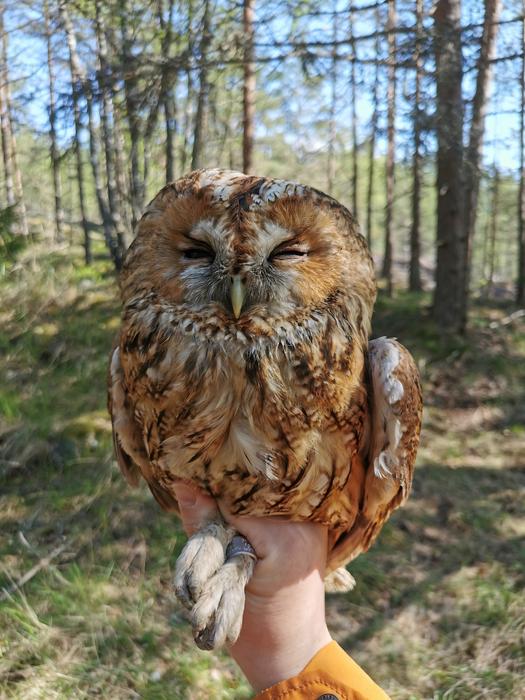A recent genetic discovery has revealed that the pale grey plumage of the tawny owl is linked to crucial functions that aid the bird’s survival in cold environments. As global temperatures rise, dark brown plumage is likely to become more common in tawny owls living in colder areas.

Credit: Photographer: Charlotte Perrault, University of Turku
A recent genetic discovery has revealed that the pale grey plumage of the tawny owl is linked to crucial functions that aid the bird’s survival in cold environments. As global temperatures rise, dark brown plumage is likely to become more common in tawny owls living in colder areas.
Colouration in animals and plants is a biological trait that has long fascinated biologists. The variety of colours has been shaped by evolution to aid in a variety of natural interactions. Coloration can help animals blend into their surroundings to avoid predators or attract a mate and can even be linked to physiological properties conferred by pigments.
The tawny owl is a nocturnal bird of prey that can be found in woodlands across Europe and western Siberia and their colour ranges between pale-grey and darker-brown. It is believed that the co-existence of both colour morphs is due to adaptations to their surrounding environment. Darker individuals are consistently found in warmer and humid environments, while pale-grey individuals are typically observed in cold, dry, and snow-prone environments, such as northern Europe.
“Based on this assumption, it has been predicted that the warming climate and snow scarcity may lead to a shift towards darker feather colouration in cold regions that have been dominated by grey owls,” says Postdoctoral Researcher Miguel Baltazar-Soares, who led an international team composed by researchers from the University of Turku in Finland, and the University of Lund and the University of Linköping in Sweden.
However, there have not been decisive links between feather colour polymorphism and different environments until now. In a recent study, the researchers assembled and sequenced the entire genome of the tawny owl for the first time and subsequently screened the genome of 370 tawny owl specimens. The researchers found gene variants that link colour polymorphism and potential adaptations to cold environment.
The researchers discovered that the combinations of two genetic variants can predict grey coloration in owls with an accuracy of 70% to 100%. These same genes are also likely involved in biological functions that are crucial for the owl’s survival in extreme weather conditions. These functions include energy homeostasis, fat deposition, and control of starvation responses, which may be interpreted as adaptations to local environmental conditions.
According to Dr Baltazar-Soares, the functionality of these genetic variants will need to be further verified in future studies. Nevertheless, these results suggest that these co-occurring colour morphs may be an adaptive response to climate conditions.
The article was published in Molecular Ecology.
Journal
Molecular Ecology
DOI
10.1111/mec.17247
Article Title
Genomic basis of melanin-associated phenotypes suggests colour-specific environmental adaptations in tawny owls
Article Publication Date
3-Jan-2024




